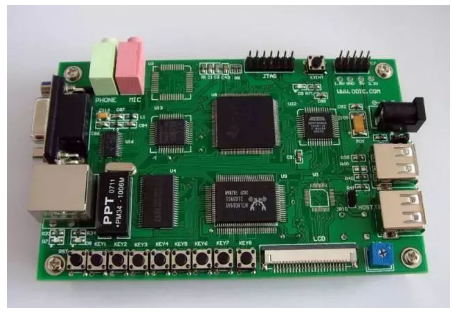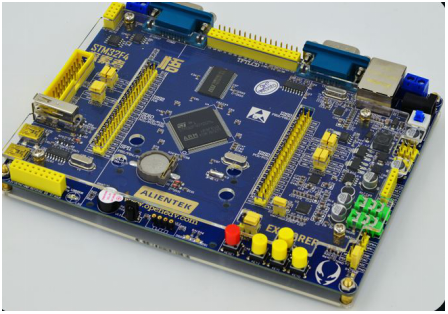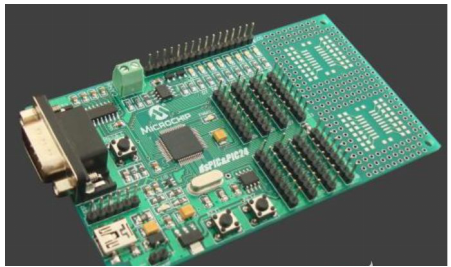TMS microcontroller, STM32 microcontroller, PIC microcontroller Introduction?
Various manufacturers are also different in speed, memory and functions~~ At the same time, a large number of manufacturers with representative single-chip microcomputers emerged: Atmel, TI, ST, MicroChip, ARM...
TMS microcontroller

Here also mention the TMS series of microcontrollers, although not mainstream. The 8-bit CMOS microcontroller from TI offers a variety of memory modes and a variety of peripheral interface modes for complex real-time control applications. Although not as good as STM32, and not as astounding as MSP430, TMS370C series MCU provides real-time system control with cost-effective integration by integrating advanced peripheral function modules and memory configurations of various chips. It is also implemented using high performance silicon gate CMOS EPROM and EEPROM technology. Low operating power CMOS technology, wide operating temperature range, noise rejection, coupled with high performance and rich on-chip peripheral functions, make TMS370C series MCUs have certain applications in automotive electronics, industrial motor control, computers, communications and consumer applications. .
The most widely used device: TMS370C256A.
STM32 microcontroller

The STM32 series of single-chip microcomputers introduced by ST manufacturers, the industry's friends know that this is a series of high-performance single-chip microcomputers, there should be no one, the function and its powerful. It is based on an ARM Cortex-M core specifically designed for embedded applications requiring high performance, low cost, low power, and first-class peripherals: 1μs dual 12-bit ADC, 4 Mbit/s UART, 18 Megabits per second SPI, etc., also has a good performance in terms of power consumption and integration. Of course, it is slightly inferior to the power consumption of MSP430, but this does not affect the degree of enthusiasm of engineers. Because of its simple structure and easy-to-use tools, it is well-known in the industry for its powerful functions... Its powerful features are mainly reflected in:
Feature 1: Core - ARM32 bit Cortex-M3CPU, maximum operating frequency 72MHz, 1.25DMIPS/MHz, single cycle multiplication and hardware division.
Feature 2: Debug Mode - Serial Debug (SWD) and JTAG Interface. Up to 112 fast I/O ports, up to 11 timers, and up to 13 communication interfaces.
Feature 3: Memory - On-chip integration of 32-512KB of flash memory. 6-64KB SRAM memory.
Feature 4: Clock-Reset and Power Management - 2.0-3.6V power supply and I/O interface drive voltage. POR, PDR and programmable voltage detector (PVD). 4-16MHz crystal oscillator. Built-in factory-adjusted 8MHz RC oscillator circuit. Internal 40 kHz RC oscillator circuit. PLL for the CPU clock. A 32 kHz crystal with calibration for RTC.
The most used devices: STM32F103 series, STM32 L1 series, STM32W series.
Learn about STM32's full range of products: the full range of STM32 microprocessors in the field.
PIC microcontroller

PIC microcontroller series is a product of Microship, which is divided into three levels, namely basic level, intermediate level and advanced level. It is one of the fastest growing single-chip microcomputers in the market. The CPU adopts RISC structure, respectively 33, 35 58 instructions, which is a reduced instruction set, and adopts Harvard dual bus structure. It runs fast. It can make program memory access and data memory access parallel processing. This instruction pipeline structure completes two parts in one cycle. One is to execute the instruction, the other is to take the next instruction from the program memory, so that it seems that each instruction only needs one cycle, which is one of the reasons for high-efficiency operation. In addition, the reason why PIC microcontroller becomes a very hot single-chip microcomputer Nothing more than the following characteristics:
Characteristic 1: When set to 1, it is the input state, and the external high-impedance state is high regardless of whether the pin is high or low. When set to 0, it is the output state, regardless of the level of the pin. Low-impedance state, with considerable drive capability, low-level sink current up to 25mA, high-level output current up to 20mA. This is a big advantage over the 51 series.
Feature 2: Low operating voltage, low power consumption, and strong drive capability. The I/O ports of the PIC series MCUs are bidirectional, and their output circuits are CMOS complementary push-pull output circuits. The I/O pin adds a direction register for setting the input or output state, which solves the same state of input and output when the 51 series I/O pin is high.
Feature 3: It can directly drive the digital tube display and the external circuit is simple. Its A/D is 10 bits, which can meet the accuracy requirements. With online debugging and programming (ISP) capabilities.
Disadvantages:
The dedicated registers (SFRs) are not concentrated in a fixed address range (80 to FFH) like the 51 series, but are scattered in four address ranges. Only five dedicated registers PCL, STATUS, FSR, PCLATH, and INTCON appear simultaneously in four banks, but in the programming process, it is indispensable to deal with special registers, and the corresponding bank must be selected repeatedly, that is, the status register STATUS Bit 6 (RP1) and 5 (RP0) are set or cleared. The data transfer and logic operations basically have to be done through the working register W (equivalent to the 51 series accumulator A), and the 51 series can also be directly transferred between the registers through each other, so the bottleneck phenomenon of the PIC microcontroller is better than the 51 series. It's still serious, and this friend in programming should have a deep understanding.
The most used devices: PIC16F873, PIC16F877.
If you want to know more, our website has product specifications for TMS microcontroller, STM32 microcontroller, PIC microcontroller, you can go to ALLICDATA ELECTRONICS LIMITED to get more information

